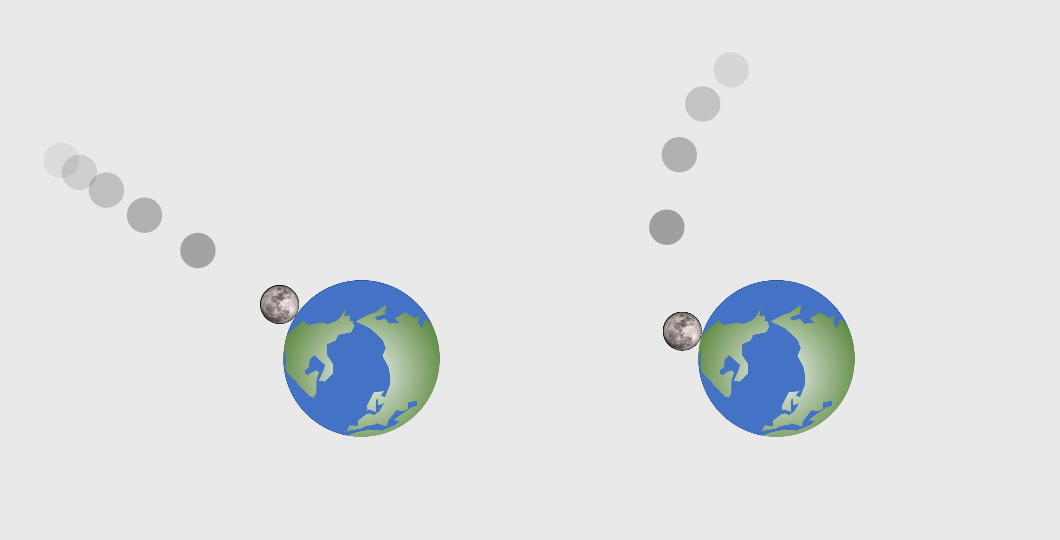This simulation …
- Applied a geocentric coordinate system.
- Air friction is ignored.
- Covers fall and orbital motion due to Earth’s gravity. (However, the same can be applied to other celestial bodies.)
Gravity
Objects with mass exert a pulling force on each other.
This gravity is a tiny force compared to electromagnetic force when viewed on an atomic basis, but it is a considerable force when viewed as a celestial body like the Earth. This is because gravity is entirely proportional to mass. On the other hand, electromagnetic forces have a canceling effect due to other polar charges nearby.
Fall by gravity
Suppose there is a huge mass of a celestial body like Earth. The Earth exerts a gravitational force on all objects around it. This force causes objects to accelerate toward the center of the Earth and fall.

As you can see in the picture, falling objects have something in common: a low initial speed or a slow speed of motion in the direction perpendicular to gravity. In this case, because the pulling effect of gravity is greater, the object cannot go anywhere else and accelerates toward the center of the Earth.
Rotation by Gravity
If an object around the Earth is thrown quickly in a direction perpendicular to gravity, it can orbit the Earth. This is effectively like falling infinitely.
